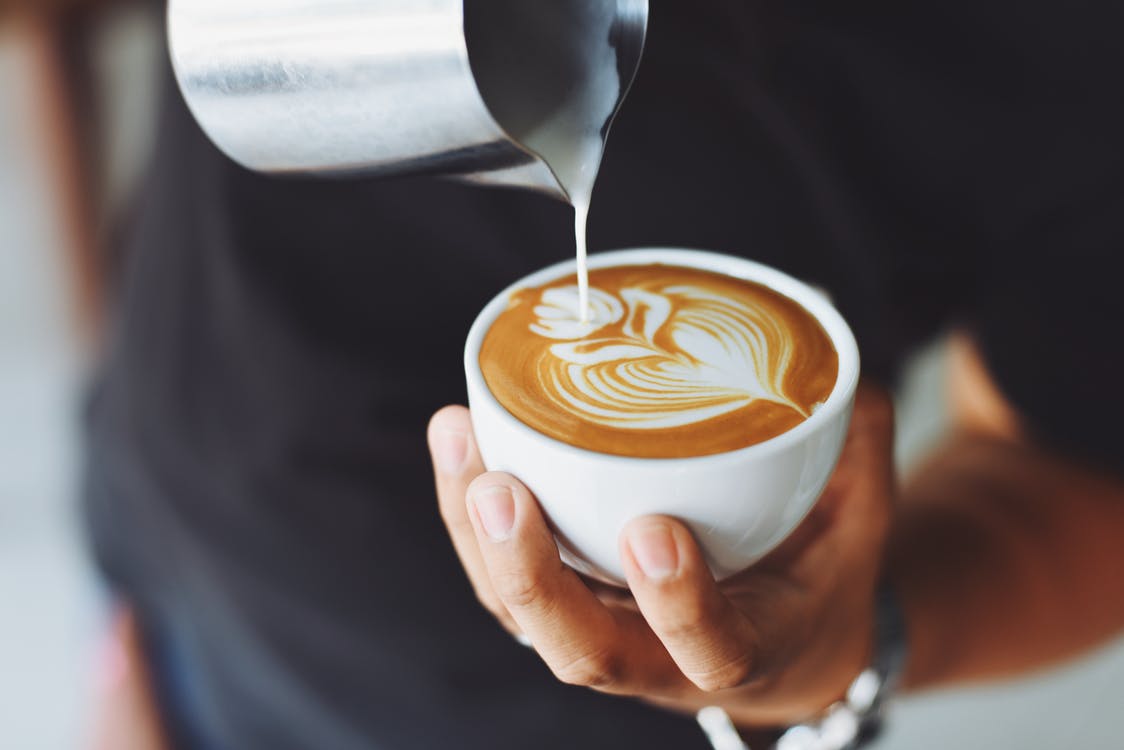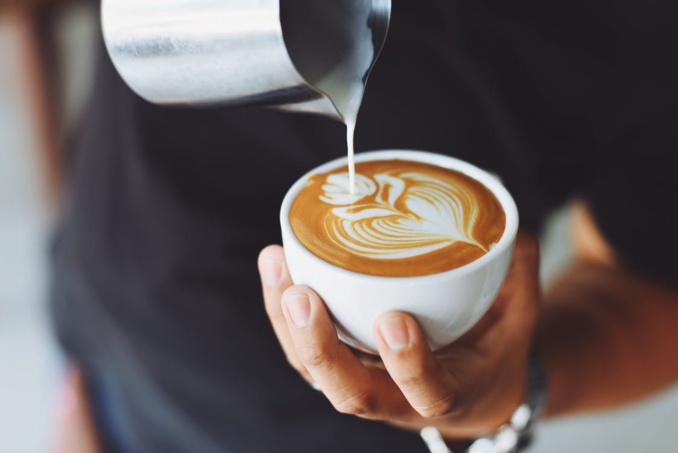Active use of new technologies in preparation and sale of coffee and coffee drinks began in the early 2010s. This led to a steady growth in the volume of the coffee market: for example, it increased by 36% in the United States from 2010 to 2018.
Demand for coffee has also increased: for example, in the UK, where tea has historically dominated, coffee consumption has grown by 35% over the past five years. The same amount of coffee can give a radically different profit depending on whether it is sold in grains or as a drink. Starbucks 'capitalization from the beginning of 2013 doubled to $ 77 billion, and Dunkin' Donuts jumped 2.5 times to $ 6 billion. These two companies account for 62% of the market in the US.
Another indicator of interest in the coffee market was a big deal at the end of the summer of 2018: Coca-Cola bought a network of coffee shops Costa Coffee for $ 5.1 billion, outlining plans for expansion in the fast-growing market in China.
About 44% of the demand for coffee in the United States accounts for Millennials. Since 2010, the daily consumption of coffee among young people from 18 to 24 years has increased twice. According to the National Coffee Association (NCA), more than 59% of daily consumed coffee falls in the “gourmet” segment thanks to the younger generation. This happened for the first time in 67 years largely thanks to small independent coffee shops.
People of 65 and older drink most of their coffee at home, and consumers under 35 prefer coffee-to-go. As a result, companies are trying to orient their business to the growing needs of young coffee addicts, and so they are adding speed, automation and entertainment.
Increasing sales requires speeding up the process, and automation comes to help, just like in other industries. In addition, robots are perceived as more spectacular than human employees, so it is possible that in the future they will replace them. Today, a robot can make three cups of coffee in 40 seconds; even a high-class barista will need much more time.
The Cafe X chain of coffee houses in San Francisco attracted $ 14.5 million of investment and, despite the great competition in the market, has already opened two full-fledged coffee shops and a street stall. The menu includes all standard drinks: cappuccino, latte and brewed coffee, all cost $ 3. Cost of one barista robot is $ 25 thousand.
Tokyo coffee house Henna Cafe "employs" one-armed robot Sawyer. Its duties include greeting guests, scanning QR codes and brewing coffee. Sawyer can serve up to five people at once, spending about 4 minutes on each drink. Optimal operation of a coffee shop (especially during rush hours) requires at least four such barista and two coffee machines, so as not to create a queue.
Big sales allow taking into account user preferences. The leader in Big Data coffee analysis is Starbucks. The company processes more than 90 million transactions in 25,000 coffee shops worldwide each week, and the Starbucks App is used by more than 17 million people. In order to launch personalized marketing, the company integrates artificial intelligence (AI) technologies.
Starbucks mobile application collects data about favorite drinks of users, identifies the client when he visits a "new" coffee house and can tell the barista about his preferences. Based on user data, the app offers new products and coffee supplements depending on the weather, day of the week and location. Atlas analytics, which takes into account proximity to other Starbucks coffee shops and traffic on the roads, recommends the most user-friendly locations.
Finnish company Giosg, specializing in AI-technologies, faced a problem: workplaces are far from the kitchen, therefore, workers, coming for their coffee, find a kettle completely empty or with a cold drink. So the idea of a coffee bot appeared. Through the Slack messenger, employees can find out when their hot coffee will be ready without leaving the workplace.
To implement the idea, the company needed a webcam and 3D printed shelf for it. Next, the neural network analyzed more than ten thousand images of the coffee machine. Now, when one of the office workers needs to know if there is hot coffee, they just need to enter '/coffee' in the general Slack chat, and the bot will answer. Besides, the robot also writes in the group chat to let everyone know when there is fresh coffee.
Blockchain technology enthusiasts are also trying to implement it in the coffee business. Seattle startup Onda Origins is creating an ecosystem between coffee makers and coffee lovers around the world using blockchain and virtual reality. Customers can find out exactly where their coffee comes from, and manufacturers can get the maximum revenue from each component they produce. The system shows on which plantation and by which cooperative or producer coffee was harvested. Partnerships with producers provide information on how the crop is being harvested, whether CO2 emissions are offset, whether there is interaction with other farmers.
source: forbes.com
Demand for coffee has also increased: for example, in the UK, where tea has historically dominated, coffee consumption has grown by 35% over the past five years. The same amount of coffee can give a radically different profit depending on whether it is sold in grains or as a drink. Starbucks 'capitalization from the beginning of 2013 doubled to $ 77 billion, and Dunkin' Donuts jumped 2.5 times to $ 6 billion. These two companies account for 62% of the market in the US.
Another indicator of interest in the coffee market was a big deal at the end of the summer of 2018: Coca-Cola bought a network of coffee shops Costa Coffee for $ 5.1 billion, outlining plans for expansion in the fast-growing market in China.
About 44% of the demand for coffee in the United States accounts for Millennials. Since 2010, the daily consumption of coffee among young people from 18 to 24 years has increased twice. According to the National Coffee Association (NCA), more than 59% of daily consumed coffee falls in the “gourmet” segment thanks to the younger generation. This happened for the first time in 67 years largely thanks to small independent coffee shops.
People of 65 and older drink most of their coffee at home, and consumers under 35 prefer coffee-to-go. As a result, companies are trying to orient their business to the growing needs of young coffee addicts, and so they are adding speed, automation and entertainment.
Increasing sales requires speeding up the process, and automation comes to help, just like in other industries. In addition, robots are perceived as more spectacular than human employees, so it is possible that in the future they will replace them. Today, a robot can make three cups of coffee in 40 seconds; even a high-class barista will need much more time.
The Cafe X chain of coffee houses in San Francisco attracted $ 14.5 million of investment and, despite the great competition in the market, has already opened two full-fledged coffee shops and a street stall. The menu includes all standard drinks: cappuccino, latte and brewed coffee, all cost $ 3. Cost of one barista robot is $ 25 thousand.
Tokyo coffee house Henna Cafe "employs" one-armed robot Sawyer. Its duties include greeting guests, scanning QR codes and brewing coffee. Sawyer can serve up to five people at once, spending about 4 minutes on each drink. Optimal operation of a coffee shop (especially during rush hours) requires at least four such barista and two coffee machines, so as not to create a queue.
Big sales allow taking into account user preferences. The leader in Big Data coffee analysis is Starbucks. The company processes more than 90 million transactions in 25,000 coffee shops worldwide each week, and the Starbucks App is used by more than 17 million people. In order to launch personalized marketing, the company integrates artificial intelligence (AI) technologies.
Starbucks mobile application collects data about favorite drinks of users, identifies the client when he visits a "new" coffee house and can tell the barista about his preferences. Based on user data, the app offers new products and coffee supplements depending on the weather, day of the week and location. Atlas analytics, which takes into account proximity to other Starbucks coffee shops and traffic on the roads, recommends the most user-friendly locations.
Finnish company Giosg, specializing in AI-technologies, faced a problem: workplaces are far from the kitchen, therefore, workers, coming for their coffee, find a kettle completely empty or with a cold drink. So the idea of a coffee bot appeared. Through the Slack messenger, employees can find out when their hot coffee will be ready without leaving the workplace.
To implement the idea, the company needed a webcam and 3D printed shelf for it. Next, the neural network analyzed more than ten thousand images of the coffee machine. Now, when one of the office workers needs to know if there is hot coffee, they just need to enter '/coffee' in the general Slack chat, and the bot will answer. Besides, the robot also writes in the group chat to let everyone know when there is fresh coffee.
Blockchain technology enthusiasts are also trying to implement it in the coffee business. Seattle startup Onda Origins is creating an ecosystem between coffee makers and coffee lovers around the world using blockchain and virtual reality. Customers can find out exactly where their coffee comes from, and manufacturers can get the maximum revenue from each component they produce. The system shows on which plantation and by which cooperative or producer coffee was harvested. Partnerships with producers provide information on how the crop is being harvested, whether CO2 emissions are offset, whether there is interaction with other farmers.
source: forbes.com



















